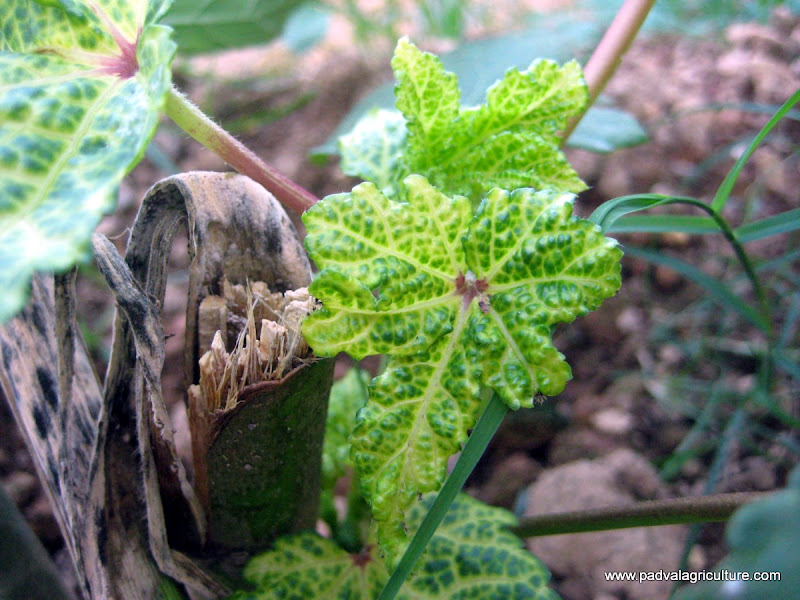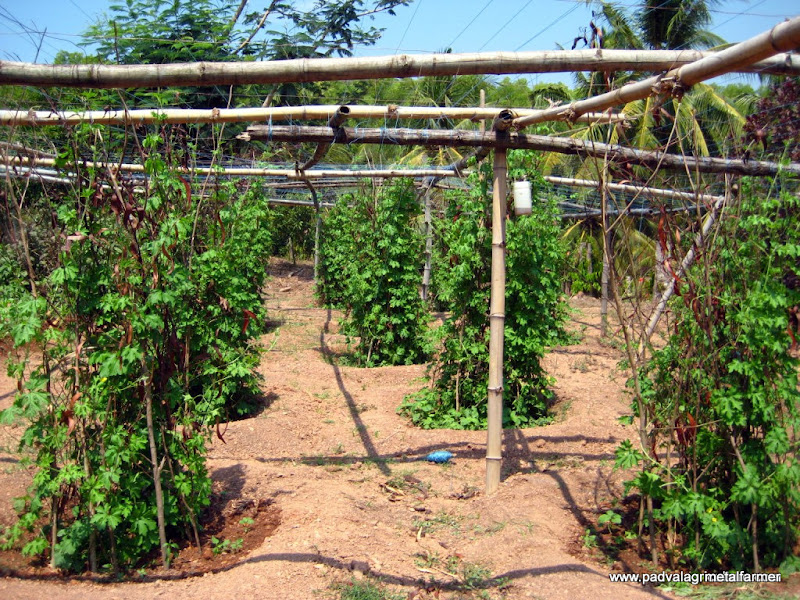Growing Cowpea Beans in Pit Method Summer Cultivation by Pritham 'Metal Farmer' D'Souza
Cowpea (Vigna unguiculata) is a very popular vegetable grown in Mangalore and other parts of th country. It has been grown in India since the Vedic period. The entire plant is of economic importance, the pods harvested are rich in proteins, while the foliage is used as green manure and fodder for animals. Its called Alasandae in kannada, alasundae sango in konkani and Lattanae in Tulu
CLIMATE AND SOIL- requires well drained soils
- saline or alkaline soils should be avoided
- it can tolerate drought to a certain extent but cannot withstand water logging
- partial shade is tolerated however its highly succeptable to frost
- being a tropical crop it thrives at temps between 21 to 35 degrees centigrade
LAND PREPARATIONsince this crop is grown on a hilly area, we chose to grow it in pits and not the traditional method of growing them in rows.
- square pits the size of 90cmx90cm with depth of 30 cm are made as shown
- the distance between the pits is maintained
- each pit, 2 buckets of decomposed farm yard manure is added and the soil is well mixed
- around 5 seeds are sowed in each pit and after germination 4 are retained in each pit
Since this variety grows long, it requires vertical support and hence the distance between the pits is very important to prevent over crowding.
MANURING AND IRRIGATION- being a root nodule crop, heavy nitrogen fertilizer application is not required, however timely application of nutrients allows for better yield results
- since we apply only decomposed farm yard manure with bacterial culture for faster decomposition, we split the manure application into 3 doses. first dose at the time of land preparation and sowing. second dose, when the plant has attained a height of 45 cms and the third and final dose on the on set of flower buds.
- since this is a summer method of cultivation, irrigation is very important and must be done at regular intervals to avoid wilting due to extreme temperatures.
- light irrigation at germination stage followed by irrigation during the early hours of the day is best for the crop during later growth
- not much mulching is required as the root zone will get adequate shade from the plant
OTHER AGRI OPERATIONS- weeds are a serious pest and need to be dealt with immediately
- during the second and third manure applications, the soil surrounding the roots are made loose and manure mixed properly. this increases soil aeration
- when the plant start to develpo long tendrils, vertical support needs to be given as shown
- the plants are then trained to grow on the support
FLOWERING AND HARVEST- most varieties start to produce flower buds after 45 days after sowing, and pods can be harvested after 15 days after pod setting
- the fruits formed can be harvested up to 45 to 60 days after flowering and then there will be gradual decrease in yield and also quality.
- spraying with plant hormones before the onset of flowering, produces more female flowers and is recommended
- growing flower crops like marigold side by side also increases the yield due to increase in pollinating agents like bees, wasps etc
PEST AND DISEASE MANAGEMENTPod borer (Muruca tesulatis and Lampides boeticus) is the single most destructive pest, resulting in over 80 percent crop loss. colonies of
aphids are also seen on young leaves and inflorescence and makes harvesting difficult.
Leaf eating caterpillars tend to skeletonise the plants if not checked properly
- for pod borer, chemical application is foliar spray with a combination of profenophos and cypermethrin @2 ml per litre of water sprayed at interval of 10 days just at the onset of flower bud formation.
- we use pure neem oil @10 ml per litre of water and sprayed at 7 day intervals
the application of neem is not a 100 percent guarantee to eliminate pod borer problem, but it controls the problem to a great extent and is an organic method of controlling
- for leaf eating caterpillars, hand picking using gloves and destroying the pests is the best option even though its cumbersome.
- aphid problem can be controlled by using the least toxic imidochloprid @half ml per litre of water at 14 day intervals. other chemical method is using Dimethoate Rogar at 1 ml per litre of water and sprayed when the incidence is observed.
SOME IMPORTANT TIPS- bugs that emit characteristic odor are not a serious pest and can be controlled using neem sprays
- Bruchid (Callosobruchus chinensis) causes damage to stored cowpea seeds by the grubs which turn the seed hollow by eating from inside. infestation starts in the field but can be seen mostly at storage. adding 2 percent edible oil (volume by weight) controls this problem for at least 5 months. seeds have to be dried thoroughly before storage.
- foliar application of neem should be done in the evenings when the intensity of sunlight is less. after 4 pm before 6 pm is ideal
- the tender succulent pods are preferred to over ripe wrinkled pods. and so harvesting every day is recommended to avoid this problem
all images and data by Pritham 'Metal Farmer' D'Souza




















































